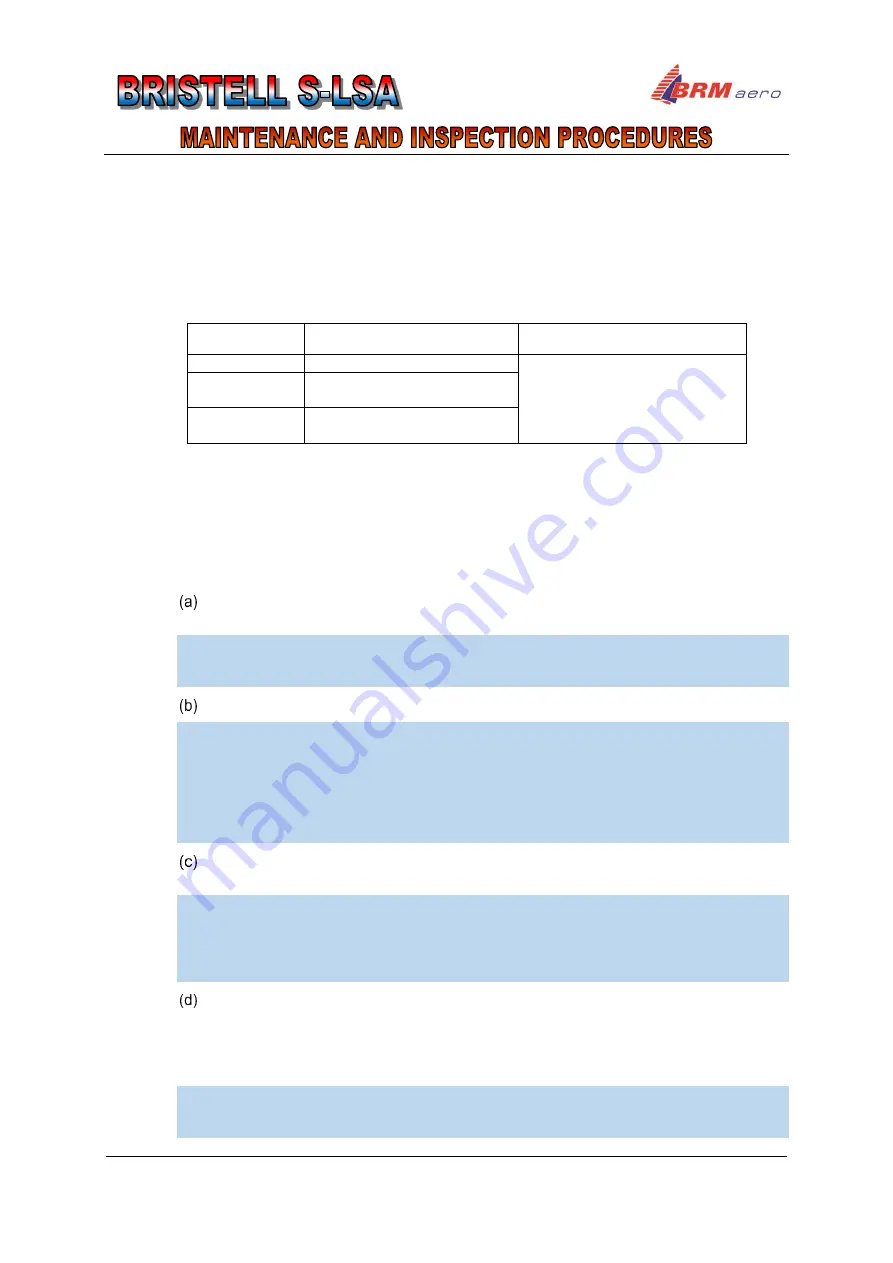
Document: SLSA-MIP-5-4-0-US
Date of Issue: 05/2016
Revision: -
15-4
15.3
Riveting
15.3.1
General
Riveted parts are used in design of BRISTELL S-LSA airplane for whole fuselage, wings,
flaps, ailerons and tail unit.
In the following table there is a survey of rivets that are used on BRISTELL S-LSA airplane
structure.
Type of rivets
Designation
Use
AVEX
Aluminum rivet on steel stem
Fuselage, wing, stabilizer,
elevator , rudder, flaps, ailerons
MS20426AD
Aluminum rivet with
countersunk head
MS20470AD
Aluminum rivets with universal
head
Tab. 15-1
Survey of rivets used in airplane structure
In case that different replacement rivets are used than shown in Tab. 15-1 then rivet
dimensions must be identical with originally used rivets and material of rivets must fulfill the
same material characteristics.
15.3.2
Riveting procedure
Fit the parts being connected and drill them together. Hole diameter must be of 0.1 mm
(0.004 in) bigger than rivet shank.
NOTE
When drilling, fix by clamps or clecos mutual position of assembled parts. Holes of higher
diameters predrill with a drill bit of smaller diameter and then redrill them to the final size.
Disassemble the parts and deburr the holes.
NOTE
For sunk rivets perform conical countersinking of the rivet head by 5° smaller apex angle
(e.g. the head with angle of 100° will have countersinking of 95°±1°). After countersinking,
the cylindrical part of hole with min. length of 0.3 mm (0.012 in) must remain in material.
Countersinking must be performed in such a way that the rivets head overruns the area
before riveting max. by 0.2 mm (0.008 in), the rivet head must not be under the surface level
(sunk).
Before applying the bonding sealant carefully clean the connected parts of impurities
and degrease contact surfaces by appropriate agent, e.g. industrial spirit.
NOTE
For cleaning and degreasing use a clean paper towel or cloth. After wiping, the towel or cloth
must not show any contamination. For perfect degreasing the whole surface, clean always
smaller part of surface, after its perfect cleaning continue on. Cleaning liquid always apply
on the cloth only and wipe it off from the surface before its evaporating.
Apply bonding sealant on one of the surfaces, which should be sealed together. Apply
the adhesive directly from the packing by means of the extrusion gun, plastic spatula or
paintbrush in such a way that the layer of sealant is equally thick and integral, without
bubbles or uncovered areas. The optimum thickness of the applied coat is 0.3 mm
(0,01
in)
.
NOTE
The surfaces that are to be connected must be dry and clean before application of bonding
sealant.
Summary of Contents for S-LSA
Page 2: ......
















































